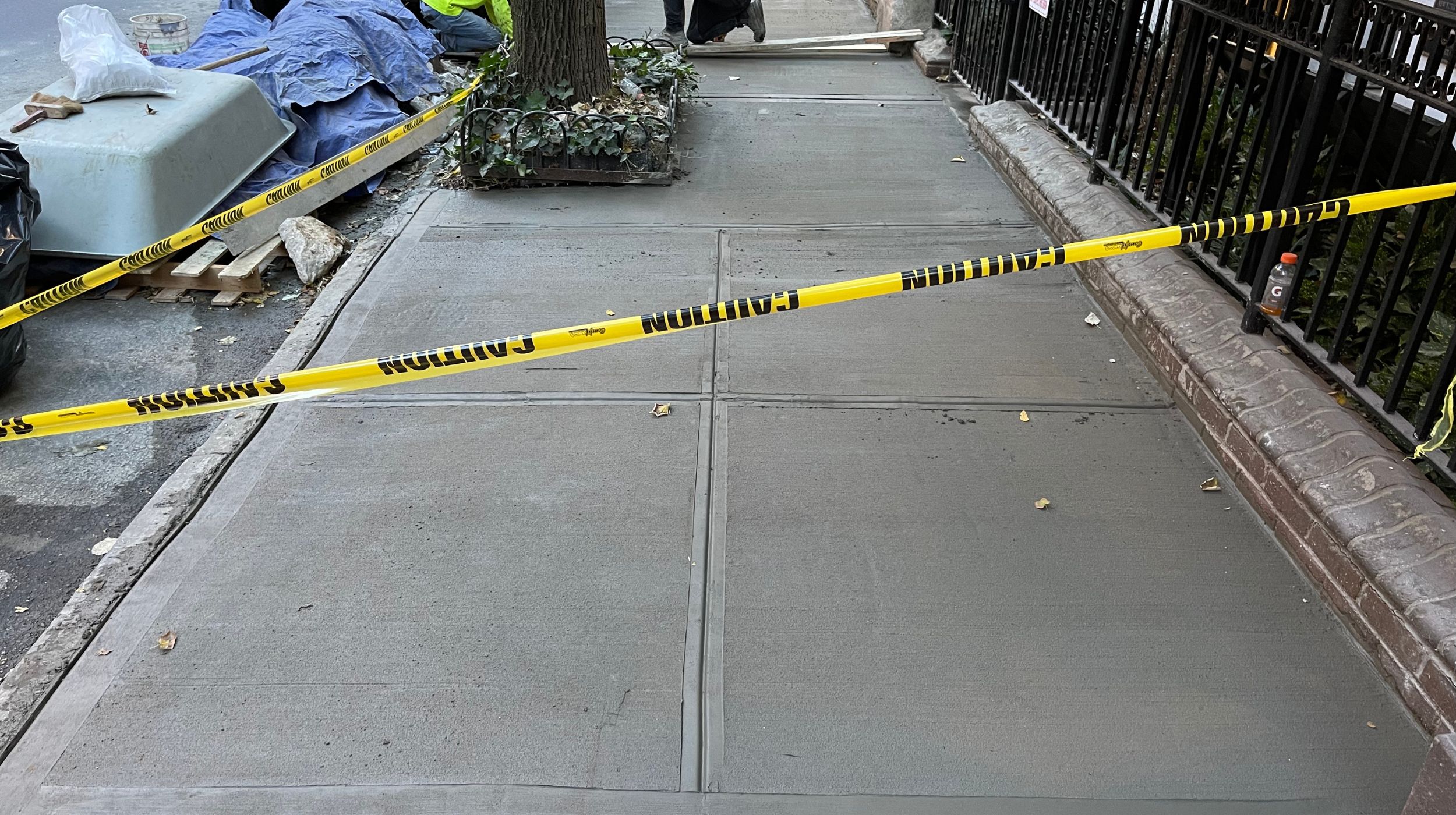



Nobody wants to hear that their sidewalk has been charged for a violation by the Department of Transportation (DOT). The walkway infrastructure in New York City is extremely important for people’s daily transportation. You should be aware of certain information regarding the DOT violation for NYC Sidewalk Repairs.
Sidewalk violations can range from small angles to significant collapses in size and shape. Suppose your sidewalk fits into one of these categories or any variation thereof. In that case, you may be in for a significant expense and face a possible slip-and-fall lawsuit. Here are six examples of NYC sidewalk infractions:
You may violate the law if you don’t fix a collapsed sidewalk if your sidewalk dips, falls, or malfunctions. Typically, this issue only arises on elevated walkways like ramps or staircases. After all, if something is level on the ground, it is difficult to collapse.
Whether your sidewalk adheres to the fundamental principles of physics or not makes no difference. The question is whether it conforms to the meaning of “collapsed.”
If your sidewalk is not correctly leveled, there will be a sidewalk DOT violation. As an example, it is a violation if a portion of the sidewalk has a “lip,” or a slight rise, that is significant enough to cause people to trip or fall.
Contractors frequently use grout to bridge the gap and create a smoother walkway to solve this issue. Doing this can fix the trip hazard flaw; however, if done incorrectly, the wrong slope problem can be introduced.
Similar to regular trip dangers, but due to actual physical items or hardware sticking out from the sidewalk. It frequently results from old construction debris or equipment exposed over time due to weathering and erosion. In either case, a legal flaw can cause your walkway to fail a DOT inspection.
If a tree is planted too close to a sidewalk, the sidewalk might quickly begin to experience root damage and “reclaiming” by the tree. In NYC, that is a sidewalk infraction. Well, good luck trying to find a tree in a metropolis!
It pours when it rains. Additionally, your walkway may be on an inappropriate slope if the rain pours down it like a torrent. Ensure your walkway is as level as possible by employing the appropriate slope or stairs.
Potholes and other flaws should be absent from sidewalks. Your building may fail a DOT inspection if the sidewalk patches are improperly maintained.
75 days are given to building owners for DOT violation removal NYC. (The repair duration is 10 days for emergencies, such as a collapsed or impassable portion.) The following are some steps in the repair process:
The contractor needs to be aware of DOT requirements for sidewalk repairs or sidewalk violation removal. Owners can search the DCA database for a licensed contractor or confirm a contractor’s license obtained from another source.
Verify that the contractor has the required permits before the sidewalk violation removal. The cost of a permit to build a sidewalk is now $70 for every 300 linear feet of walkway for a single property, and owners can call 311 to request one. This price covers both the permit’s administrative expenses and the expense of firing an inspector.
Owners can request a dismissing inspection when the repairs are finished by calling 311 and providing the following details: the permit number, the property address, the block and lot numbers, and the infraction number.
If the owner doesn’t fix the problem within the given period, DOT contractors may handle the job. The owner has 90 days to settle the bill for DOT violation removal NYC. The city sets a lien on the property and charges interest after 90 days.
Property owners in New York City must keep the sidewalks close to their premises in good condition. You can ask the DOT to help you repair it and bill you for the cost, or you can hire a licensed DOT violation removal contractor to do it for you if you want more control over the proceedings and possibly a lower price.